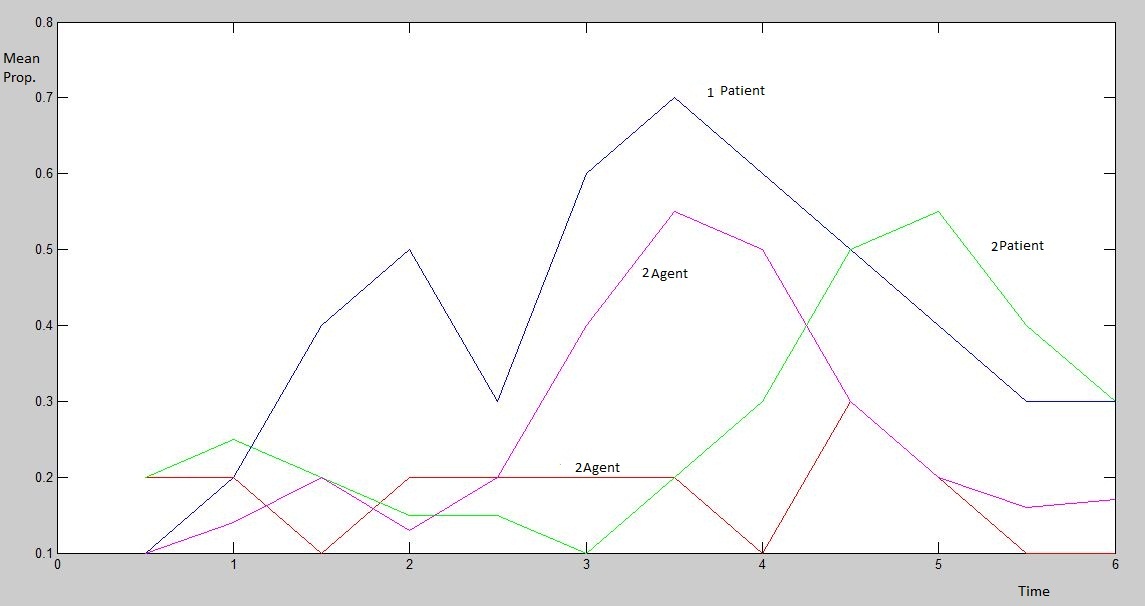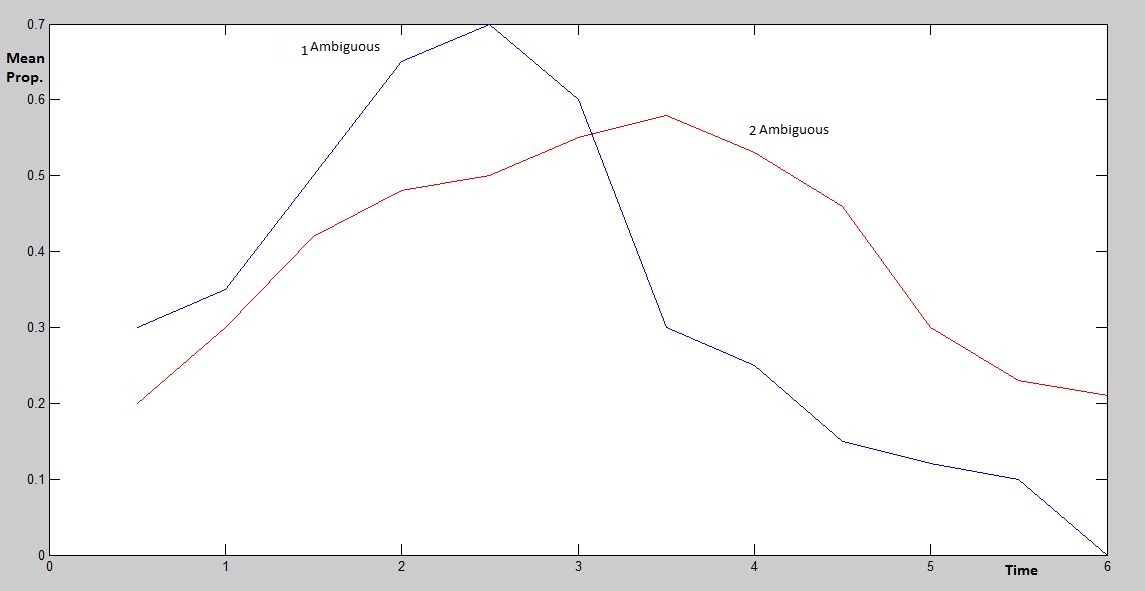Study of structure disambiguation using eye tracking
Introduction
Many studies have been done to understand the interplay of utterance and visual cues in comprehension, disambiguation of the sentence structure and thematic role assignment. An interesting experiment done by Tanenhause at el. used ambiguous instructions such as “Put the apple on the towel in the box” the phrase “on the towel” is a modifier of the noun phrase. However, it can also be viewed temporarily as a modifier of the verb and can be used to identify the destination of the apple as the towel. When the sentence was uttered and an image of an apple kept on a towel and an empty towel was shown to the subject, the subject initially looked the apple, but fixated immediately on the empty towel on comprehending the phrase, “on the towel” as the destination instead of a noun phrase modifier. However, when the subject was shown two apples one of which was kept on a towel and the other one on the table, the subject’s gaze kept oscillating between the two apples while listening to the noun phrase before fixating on the apple on the towel while listening to the noun phrase modifier.
Through this project I wish to observe and make plots of proportion of eye gaze with respect to time for ambiguous sentences in Hindi.
In this project I have used the following sentences:
राजकुमारी ने सेनापति को तलवार से मारा I (1)
राजकुमारी ने चित्रकार से चित्र बनवाते हुए सेनापति को तलवार से मारा I (2)
In the first sentence there is no ambiguity, and the second sentence shows structural ambiguity since the thematic role of “राजकुमारी” is ambiguous. ”राजकुमारी” is ambiguous because she is the agent in the phrase “राजकुमारी ने सेनापति को तलवार से मारा” where “सेनापति” is the patient. However, in the phrase “राजकुमारी ने चित्रकार से चित्र बनवाते हुए”, “राजकुमारी” acts like a patient and “चित्रकार” is the second patient.

Resulting gaze proportionality graphs:


